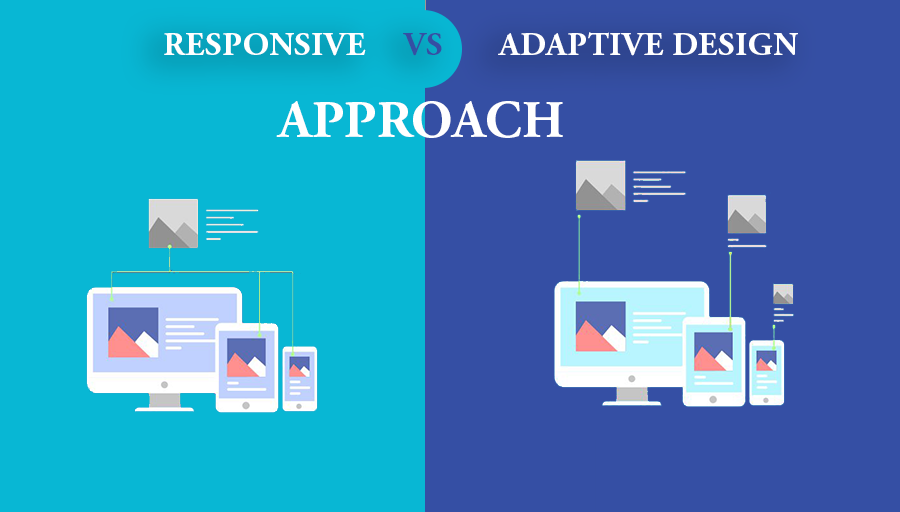Nowadays, various kinds of devices with varying screen configurations are available in the market. Mobile phones, tablets, etc. all come with different screen resolutions. Mobile devices are mostly used by users.
Responsive and Adaptive design are two approaches to creating a website that adjusts to the different screen sizes and devices of its users.
One approach is to create an app for each and every screen resolution, which is quite difficult and time-consuming to implement. The second approach is to develop an app that can customize itself as per the screen resolutions of the device.
Today we will discuss both of these approaches and see which one is better and why. Let us have a look:
Responsive vs Adaptive Design Approach: How they are different?
In the case of the responsive design approach, the design layout of the application automatically adjusts itself according to the screen resolution of the device on which it is being used. Because of this flexibility, the designer of the application does not need to have different layouts for different devices. The designer has to prepare only one layout. Bootstrap and CSS are most widely used to prepare such designs.
Whereas in the case of the adaptive design approach, for each and every device resolution different design layout has to be prepared. When the application is loaded on a device, the screen resolution of the device is determined and that layout is loaded which has been made for that device’s screen resolution.
The selection of the best approach plays an important role in improving your rankings.
Advantages and Disadvantages of the Responsive Design Approach:
Advantages:
- To create this design drag-and-drop method is used. It means components are already available and they just need to be dragged and dropped onto the web page being prepared. This reduces the requirement for coding.
- It is quite cost-effective as only one design layout has to be prepared. Thus the development and maintenance both require less amount of money.
- It needs less effort as only one design layout is required. This helps in developing an app quite fast.
- It helps in preparing simple and smooth-looking designs.
- This approach is SEO-friendly.
- Sharing of content is easier as no device-related redirection is required.
Disadvantages:
- Until and unless the mobile-first approach is adopted, the application fails to be fully optimized for the mobile device.
- The speed of the website gets reduced because images have to be scaled down or scaled up as per the device’s resolution.
- Even though only one design layout has to be prepared, preparing a responsive design is a time-consuming process.
- Sometimes it becomes difficult for the designer to control the flow of the page. It also needs lots of planning and experimentation.
Examples of responsive design approach: Paper Tiger, The Guardian, etc.
Advantages and Disadvantages of the Adaptive Design Approach:
Advantages:
- It takes less time in loading because the design is predetermined. It just needs to find out the device resolution and load the design layout.
- The layout prepared is static in nature and extremely precise as per the device resolutions.
- The place for ads can be added easily because the design knows exactly the place where the ad will be displayed when the app is opened.
- There is no need to restructure the current website as new versions will be prepared for different devices.
Disadvantages:
- As this technique targets only a few popular devices, the design layout will not be shown properly on the device for which the layout was not developed.
- A big team of developers and designers is needed as different versions have to be prepared for different devices. Thus the cost of development and maintenance is increased.
- The adaptive design approach is less popular than the responsive design approach.
- This technique demands perfection and that makes the task of a designer quite tedious, especially for those who are new in this field.
Examples of adaptive design approach: Amazon, Flipkart, etc.
Conclusion:
In conclusion, Responsive and Adaptive approaches have their advantages and disadvantages. Responsive design is best suited for websites with a large number of pages and content that needs to be easily accessible on any device. Adaptive design is ideal for websites with limited content, or when it’s crucial to provide a specific, device-optimized experience.







